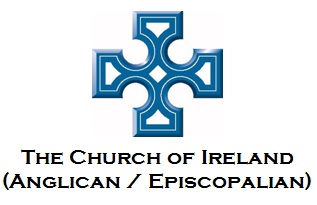CHURCH
According to Canon Leslie’s book on Armagh Diocese the present church of Drumcar was built in 1845 on the model of that at Littlemore near Oxford. It cost £1,550 to build, of which the Ecclesiastical Commissioners contributed £160 only. Since the parish was largely endowed by the first Lord Rathdonnell, presumably he provided the balance. The chancel was added in 1868.
EAST WINDOW
The East window (attributed to Harry Clarke) is dedicated to Francis George le Poer McClintock (1853 – 1924). He is described in McClintock family records as “a most excellent man in every respect who combined the duties of Rector of Drumcar and Dean of Armagh” (from 1908). “He bought Drumcar House from the second Lord Rathdonnell and established his twin sisters, Emily and Gertrude, there, while he himself, being a bachelor, lived at the Rectory.”
The tablets in the church are mostly regarding the McClintock family of which Lord Rathdonnell was a member and include one Admiral Sir Leopold McClintock. He was born in Seatown Place, Dundalk and went to sea at the age of 12. He later became famous for travelling to the North West passage in search of the remains of the Franklin expedition which he subsequently found.
He brought back many artifacts from the abandoned ship. Unfortunately all the members of the expedition perished.
THE LYCHGATE
(or Lichgate: lic (Old English) being a body or corpse) “A lychgate is a roofed-in gateway to churchyards. Here the clergy meet the corpse and some portion of the service is read. The gateway serves to shelter the pall bearers.” (Encyclopaedia Britannica)
This lychgate was erected by the second Lord Rathdonnell in 1895. It was repaired during the 1970s by Tom Yore of Drumcar with money raised by Mrs Diana McClintock (mother of Kate Okuno), in memory of her second husband, Col. R.S. McClintock (son of Sir Leopold McClintock). A flower festival c.1999 was to raise funds for work being done on the lychgate and the cutting of branches overhead.
Lychgates are extremely rare in Ireland. Apart from this one, we know of one at Millicent, Co. Kildare, Farnought in Co. Leitrim and one at Drumbeg. They existed in England thirteen centuries ago and one still exists in Bray, Berkshire, dated 1448. Few old ones survived because of their wooden structure.
THE MAUSOLEUM
A Mausoleum is a monument erected to receive the remains of a deceased person which sometimes take the form of a sepulchral chapel. The term originated with the magnificent monument erected by Queen Artemisia for the husband King Mausolus. (The Mausoleum at Halicarnassus or Tomb of Mausolus (Ancient Greek: Μαυσωλεῖον τῆς Ἁλικαρνασσοῦ) was a tomb built between 353 and 350 BC at Halicarnassus for Mausolus, a satrap in the Persian Empire and his sister-wife Artemisia II of Caria. (Wikipedia)
Drumcar’s mausoleum was designed by English architects appropriately called Slater and Carpenter. It was commissioned by the McClintocks in 1868 and contains the coffins of 14 adults and 1 child – all belonging to that family.
.
